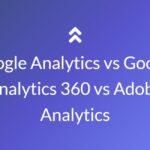Adobe Analytics vs Google Analytics vs Google Analytics 360 the battle of the analytics giants!
Choosing between Google Analytics, Google Analytics 360, and Adobe Analytics depends heavily on your specific needs and budget. Here's a breakdown to help you decide: Google Analytics:Google Analytics 360:Adobe Analytics:…

